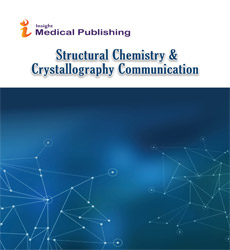Abstract
Dendrimer based Nanoparticles as potential drug delivery vehicles to enhance effect of pulmonary disease treatment drugs
SARS CoV-2, more commonly known as the Novel Corona virus has caused a pandemic situation spread across 213 countries affecting more than 1.5 million (April 2020) lives with COVID-19, a severe respiratory disease around the globe. Traditionally, it takes years to develop, test and manufacture a vaccine; the one that worked in Congo against Ebola was under development for a decade. These hurdles haven’t changed for COVID-19. Owing to the critically time sensitive demand of treatment worldwide, several drugs are being hastily tested to combat the symptoms of this virus at the cost of compromised concerns of side effects and other safety norms. This may also lead to the use of unapproved, experimental drugs for small numbers of desperately ill patients outside of clinical trials. Furthermore, the treatments are challenged due to limited dosage regulation, threats of antibiotic resistance, difficulty in treating relapse disease and those with compromised immune or higher demographic susceptibility. To battle this situation, it is desirable to optimise the efficacy and therapeutic potential of the drugs being currently tested or used against SARS CoV-2 or even other related ailments. Successful pulmonary drug delivery presents many challenges, but interest in the pulmonary route seems to be greater than ever. There has been much interest in increasing the lon¬gevity of drugs in the lungs, whether for local or systemic action. Although a variety of controlled release formulations have been evaluated over several decades, only liposomal formulations have progressed so far to late-stage clinical trials. Most inhaled drug products deliver particles in the size range <5 μm, but there are potential advantages to be gained from the use of nanoparticle formulations, that is, particles <1 μm. Nanoparticles could improve drug targeting by achieving a more uniform distri¬bution of drug in alveolar regions. Many drugs have poor aqueous solubility, and a potential way to enhance solubility is to reduce the size of particles to the nanometer scale. This results in a larger surface area per unit mass of drug, which in turn may increase the amount of drug that can dissolve in lung lining fluid. The delivery of nanomedicines by inhala¬tion is still a young science, but with newer formulation strategies where we would include the use of polymers and other nanomaterials loaded with drug, there is a heightened possibility of developing efficient DDS to combat pulmonary and other illnesses. In the current situation, there is hence an urgent need to develop safe and effective counter measures that can be available, accessible and suitable for use in populations most in need. Polymers bearing weakly ionizable groups like Poly Amido Amine (PAMAM) Dendrimers are attractive candidates for intracellular delivery because of their ability to undergo a pH-responsive conformational transition and destabilize endosomal membranes. The mechanism of endosomal disruption depends on the chemical nature of the ionizable group. Judicious cellular and animal studies early in device development help to ensure that polymer-related breakthroughs and in vitro successes result in effective and safe drug delivery platforms. In order to attain the best response in lung epithelial environment, it is essential to note that not only the size but also the material of the Drug Delivery System (DDS) may alter results. Biodegradable PAMAM dendrimers provoke less toxicity and inflammation compared to non-biodegradable polymers of the same size. Reports on the pharmacokinetic profiles of dendrimer based DDS have indicated that the they reach their peak concentration in systemic circulation within a few hours after pulmonary delivery, independent of their chemistry, charge, or size. It is also reported that high density of surface modification with PolyEthyleneGlycolic acid (PEG) enhances pulmonary absorption and the peak plasma concentration of dendrimers upon pulmonary delivery. The route of administration and PEGylation also significantly impact the whole body and local (lung cellular) distribution of the dendrimers. It is suggested that both the pulmonary route of administration and dendrimer chemistry combined can be used to passively target tissues and cell populations of great interest such as the lung tissue. Thus, development of dendrimer-based drug delivery strategies holds tremendous potential in enhancing treatments of diseases including trending lung ailments like COVID-19 pandemic as well as other lung tissue and systemic disorders.
Author(s):
Ms. Navjeet Kaur
Abstract | PDF
Share this

Google scholar citation report
Citations : 275
Abstracted/Indexed in
- Google Scholar
- China National Knowledge Infrastructure (CNKI)
- Directory of Research Journal Indexing (DRJI)
- WorldCat
- Geneva Foundation for Medical Education and Research
- Secret Search Engine Labs
- CAS (Chemical Abstracting Services)
Open Access Journals
- Aquaculture & Veterinary Science
- Chemistry & Chemical Sciences
- Clinical Sciences
- Engineering
- General Science
- Genetics & Molecular Biology
- Health Care & Nursing
- Immunology & Microbiology
- Materials Science
- Mathematics & Physics
- Medical Sciences
- Neurology & Psychiatry
- Oncology & Cancer Science
- Pharmaceutical Sciences

